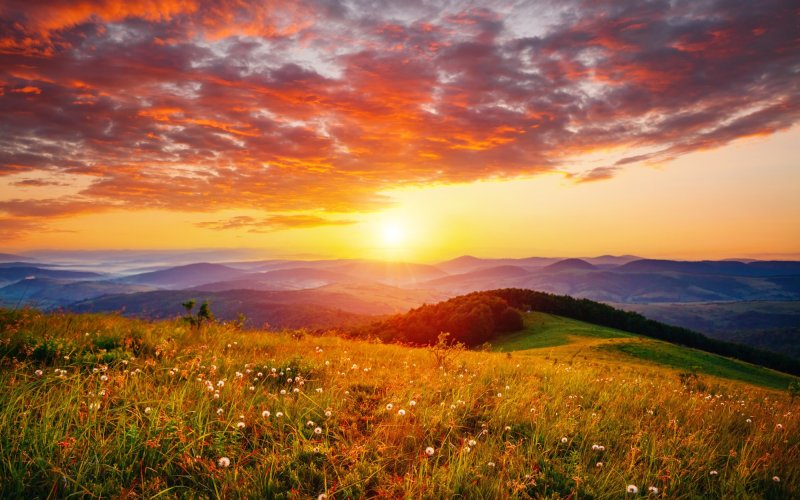I don’t think that there would always be a difference between the photos in the morning and in the evening, I would rather expect that we can observe something similar from time to time. And I would guess especially in the summer.
If I consider that these are photos taken with a digital camera/mobile phone, then there may be more influences, since most of the parameters of the photo are determined automatically by the camera. In particular, this concerns sensitivity (simplified, how bright the photo will be) and white balance (so that the white colour is really white in the photo).
However, if we had the camera set up in the same way in the morning and in the evening and took photos when the sun was at the same height, it could still happen that we would take photos with different colours (more precisely, with a different colour tinge).
This is because the light coming towards us from the Sun has to pass through the atmosphere and is scattered (that’s why the sky is blue) and refracted as it passes. Refraction is a phenomenon in which a ray of light deviates from its original direction and occurs when it passes from one medium to another. An example of the refraction of light is a rainbow and even in it you can see that different colours are refracted differently. The red colour will refract (deviate from the original direction) less than the purple colour. This is also why the sky is red at sunset. Another reason is that red light is scattered less than blue light and since at sunset/sunrise the rays have to travel a much greater distance through the atmosphere than at noon, only the red rays will pass to us.
But how does this relate to the difference in morning and evening photos? The scattering of the rays is, as described above, affected by the atmosphere. But the moisture content of the atmosphere is not the same — in the morning the atmospheric moisture is usually higher (condensing water evaporated the previous day overnight) than in the evening and because the atmosphere has different properties in the morning and in the evening, it will also scatter light differently. In addition, clouds enter the path of the rays, which also affect the course of the rays through the atmosphere. In general, it can be said that a nice red sky (and thus photos) in the evening predict a sunny day, while a nice red sky (and photos) in the morning predict rain.
Want to ask something?
Send us an e-mail with the subject “Physics mysteries” to the address:
We can't wait to tackle your interesting questions!





